Product Review: Nanoskin Autoscrub Foam Pads
by Ivan RajicThese pads are surely one of those revolutionary products that come by every few years and change the course of detailing for the better. As the description below states, the NanoSkin AutoScrub foam pads are a great alternative to traditional decontamination techniques in terms of speed and performance.
“NanoSkin AutoScrub Foam Pad will leave you speechless with how well it cleans your exterior in so little time, replacing the need for a clay bar. The new advanced rubber polymer technology removes paint over spray, light water marks, tree sap, rail dust, road grime and other extra stubborn surface contaminants safely and easily. Simply attach the pad to a dual action orbital buffer with a hook and loop backing, spray on a copious amount of the NanoSkin Glide, and start working it in on speeds 1 – 2. You will be amazed at how AutoScrub removes contaminants from the surface in so little time. The advanced rubber polymers safely separate the contaminants bonded to the exterior. You can use this on not only the paint, but the glass, moldings, and plastics. If you ever drop Autoscrub, no worries, it is also a breeze to clean unlike a traditional clay bar. If you ever drop it on the ground, or are simply done with an application, just rinse the pad clean with water and its ready to be used again! You can get about 30 or more applications out of one pad before you need to replace it! There is no need to spend 1 – 3+ hours with a clay bar anymore, with the NANOSKIN AutoScrub Foam Pad get the job done in 15 – 45 minutes! Very simply this is the most effective way to deep clean your paint in a very short period of time.Please note this unit should not be used with a rotary buffer. If you would like to skip using a buffer all together and work with these pads by hand, try using the 6.5″ pads with the DI Accessories Hand Strap.The Medium Pads are best used for heavy build ups and the Fine Pads are best for well maintained vehicles.”
First off, I would encourage everyone to read Greg Gellas’s NanoSkin AutoScrub pads article. He explains very well on how to initially prep the product for use and how well it works on all kinds of contamination. I only intend to share the few things I’ve come to learn and like about these pads over time.
Simply put, they are a must have. In addition to removing contamination quickly and effectively, these pads are extremely easy to use. They can also be used by hand or machine and the different sizes are great for getting in all the tight spaces around a car. That said, I will simply list some things that I have encountered using the pads and end the article with some photos related to using the pads on a black Tesla paint.
Few things worth mentioning
- Break-in is extremely important with these pads, because you can cause marring on even pretty hard paints if the instructions aren’t followed for the initial break-in process.
- Break-in is best done by machine as it’s quicker and not tiring on your hands/arms.
- Working by hand is much easier, safer and faster than by machine, at least from my experience. Reason being, I feel that I can use the pads much quicker by hand by quickly covering a larger area of the panel, whereas by machine I have to go slower and cover only the 4 or 6 inches at a time, depending on the pad I’m using. I feel it’s safer by hand because I can easily control how much pressure to use and how quickly to move my hand, as opposed to using too much pressure by the machine or having to work harder lifting the machine that may be too heavy on the upper surfaces like hoods or trunks. I mainly use the 6 inch fine pads by hand and 4 inch on tighter areas, such as around fog lights, license plates, etc.
- Little to no pressure works best, especially on cars that aren’t heavily contaminated with sap, tar, etc. rather just have typical particles stuck on the paint from not washing or waxing often enough.
- Rinsing the pad often (I like to do it after roughly a hood-sized panel, or 2 fenders, etc.) helps greatly with minimizing or eliminating any pad related swirl marks and marring.
- I have found the fine grade pads to be best for general use as they typically don’t cause much/any marring unless used on very soft paint
Pros
- Very easy to use
- Very efficient compared to using a clay bar.
- Reusable and pretty darn resilient to damage. I’ve used it over some very stubborn, dried-up tar and it took some very aggressive pressure with little to no lube to only slightly damage the material.
- Performance is top notch. It quickly removes embedded contaminants with just a few wipes over the surface. I normally spray down the surface and simply wipe back and forth once to remove most or all of the contamination. This obviously varies from car to car, but it works very well, very quickly.
- Versatile in that they can be used by hand or by machine. Also, the different pad sizes help greatly when working with different areas of a car.
Cons
- I don’t know if I actually consider this a negative, but these pads don’t replace clay bar 100%. I would say probably 80-90% whereas on the remaining 10-20% of the car a clay bar is necessary to remove some stubborn tar, sap and contamination from bumpers and lower panels. It’s worth noting that these pads will in fact many times remove this remaining 10-20%, but it takes a good while and you might end up damaging the pad.
- Sometimes the pad will leave streaks of “gunk” on the paint if it hasn’t been cleaned or if too much pressure is used on edges or in only one spot on the pad, such as pressing down hard with just one finger while wiping it back and forth. This usually wipes off easily or comes off with some extra lube and wiping, but it’s worth noting.
- Leaves marring on pretty much all soft paints when used with even a little pressure, but this can be controlled pretty well and the marring be reduced to a minimum. Plus, any marring is equal to or less than marring caused by a clay bar of similar aggressiveness.
Aside from those few cons, if you can call it that, I have simply replaced majority of clay bar work with these wonderful products. Below are a few photos of what kind of marring can be caused on some very soft paint, but even though it looks extremely bad, it’s usually very minor, shallow marring that can easily be polished. Plus, it pretty much only occurs this badly on extremely soft black paint. I am only posting these photos so new users are aware of what’s causing the marring and not to be too alarmed if they do see it as it’s fairly normal.
Here’s a photo of the trunk on a black Tesla S model…
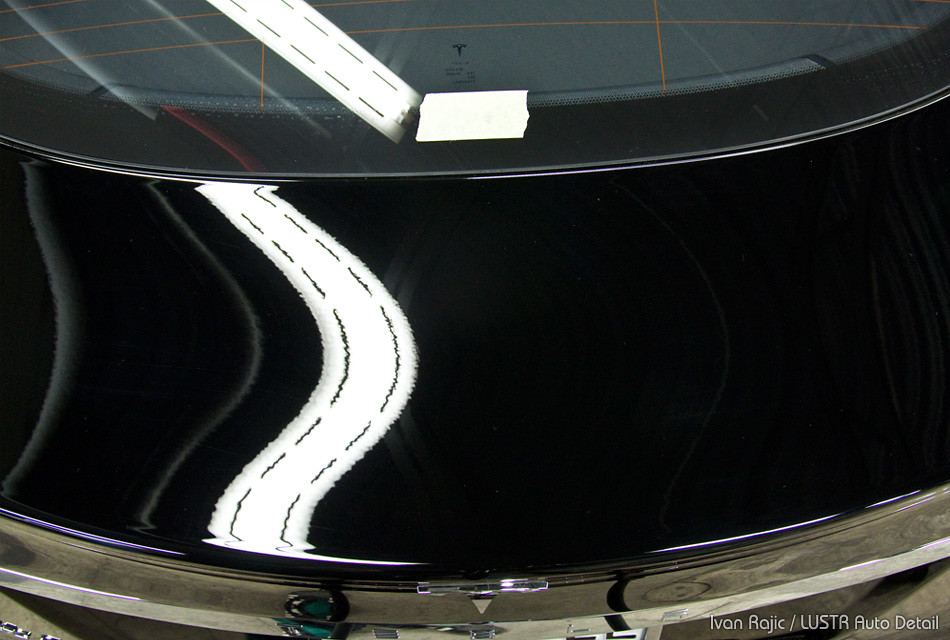
Here it is with the Brinkmann LED spotlight showing the condition before any decontamination (this is just after washing)…
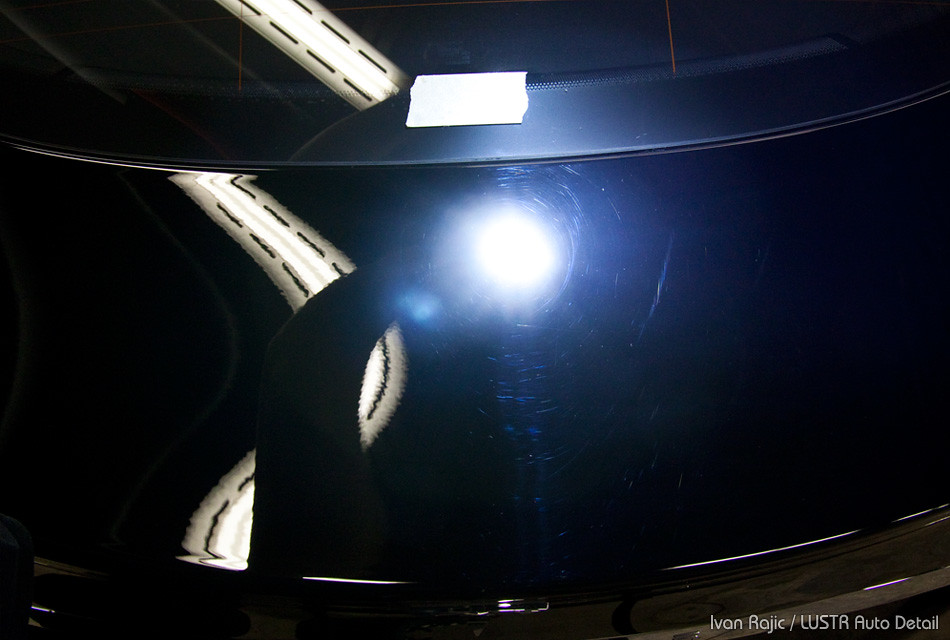
Some “autoscrubbing”/”padding” action (If anyone has a good name for the process of using these pads aside from “decontamination” definitely let me know, as I still don’t know what to call it :))
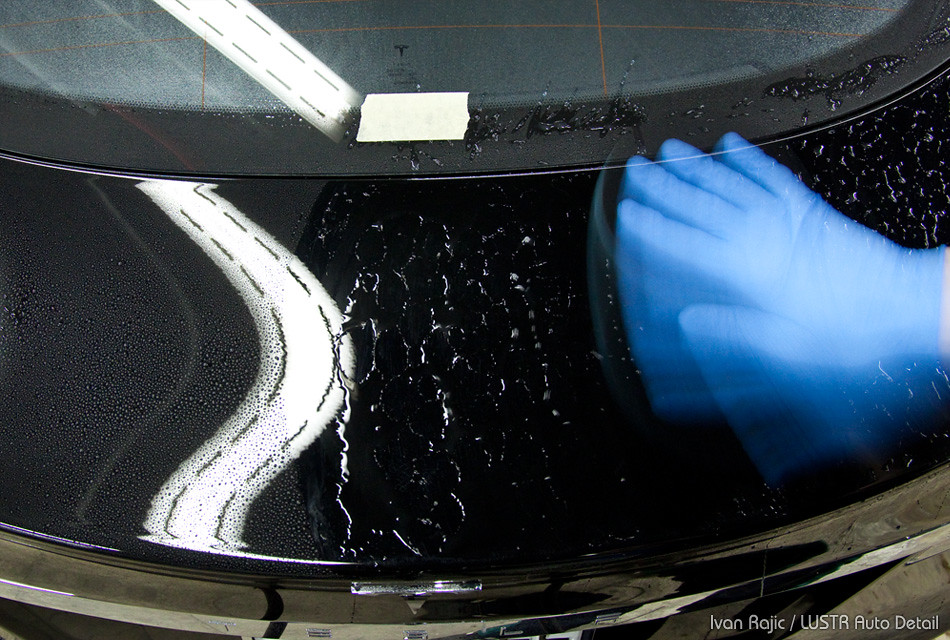
You can already see the marring just with the regular lights above…
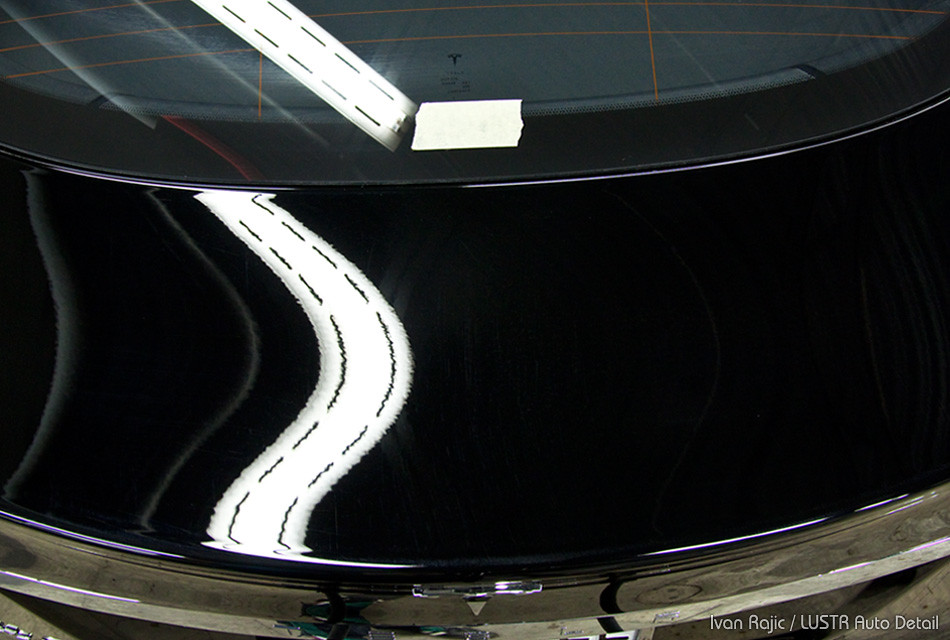
It’s really obvious with the spotlight shining…
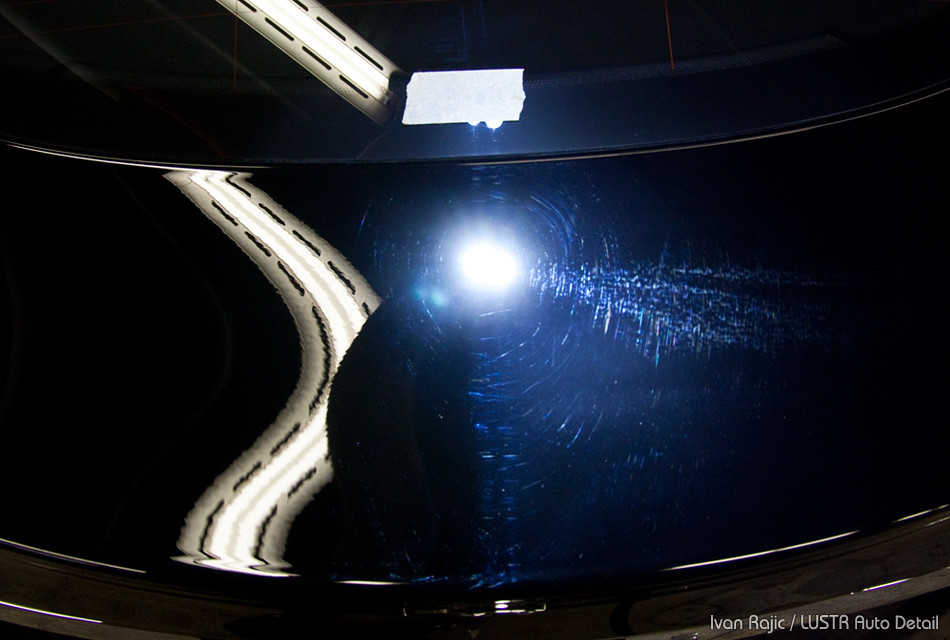
Finally a closeup image of the marring present after the autoscrub pad was used…
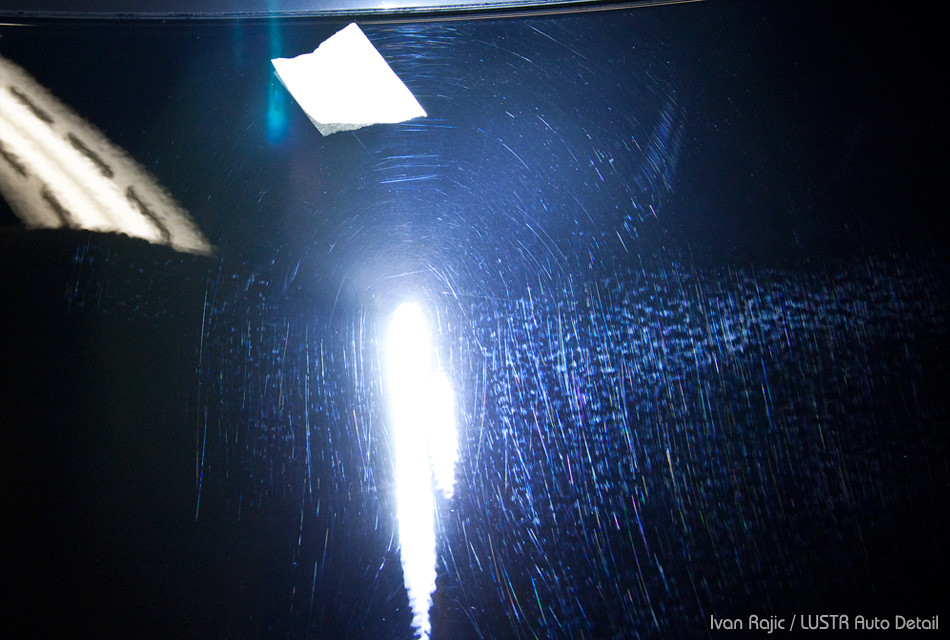
In the case above, I used a 6″ fine pad with the recommended NanoSkin Glide lubricant and no pressure. To minimize the marring, I usually use slower arm movement, work on smaller sections and obviously more lube. If I’m doing any sort of corrective polishing after, I don’t mind the marring too much as it’s very light and superficial, so it’s normally corrected easily even with a finishing pad and polish.
Lastly, here’s a shot of some of the pads I own. You’ll notice in the photo the difference between the used pad (9 o’clock) and the other three, which are either new or barely used. The material will get softer after the initial break-in period and look a bit darker due to the coating coming off, so you’ll definitely want to properly break-in each and every pad.
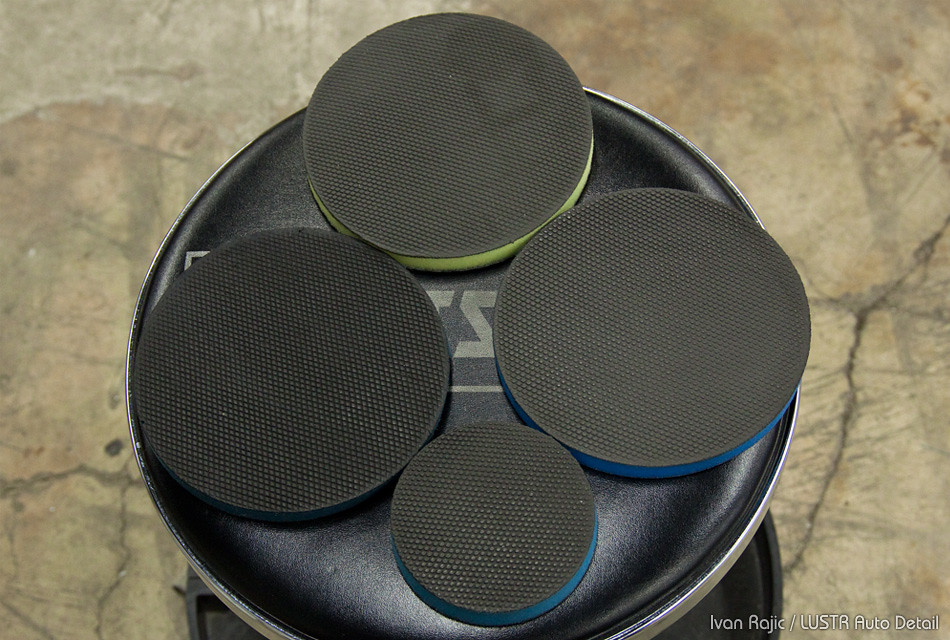
Hope this helps some of the new users out there. Thanks for reading!




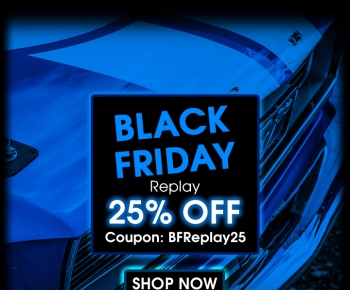




Great article Ivan.
I have noticed the marring on soft paints. Removal is very easy though, so the pros out way the cons. Great thoughts on the product!
Greg G
We also love detailing in France ! Youre welcome to visit our wesite 😉
Have been using the pads on some heavy fallout, yet many of the rail dust covered cars I’ve worked on like a 2013 VW Passat today, aggressive clay was needed and the nanoskin pad was not able to remove.
Hi Ivan,
How do you think this product compares to the Ultima Clay Block/Lube kit? I’ve been using that for a while and its done the job however, I found that it really failed against hard tar/iron contamination making me wish I had bought some clay instead!